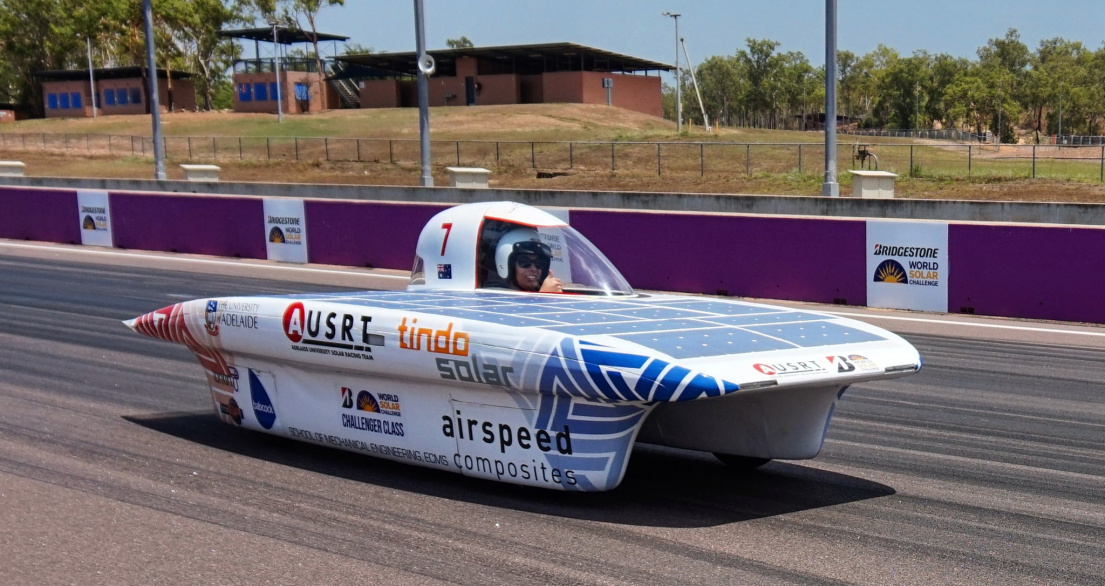Solar Car Aero Series
Solar Car Aero Series:
Beginner guide to Solar Car CFD (WIP)
Wheel covers (WIP)
A winning car (WIP)
Crosswinds and how to not flip your car (WIP)
Intro
Solar car aerodynamics has a special place in my heart - It was how I first came to get involved in CFD, discovered my passion, and started my career in engineering.
I wanted to slowly build up a small series of posts on solar car aerodynamics, for a couple of reasons:
- There’s some cool aero stuff going on that doesn’t really get talked about - there’s a culture of keeping secrets among the top teams to prevent helping competitors that I’m not a fan of
- I’d like to help some of the teams at the back of the pack, if they happen to come across this blog. I adore the scrappy underdogs at the back of the pack racing no one but the sun, desperately trying to make it to each control stop before it closes. For these teams, the killers are reliablity and aero, one of which I can help with (I see a lot of basic aero mistakes at the back of the field, that would cost nothing to fix)
- When I talk to people about this their eyes glaze over - maybe this blog will find some of the few people that actually care
- For CFD people otherwise not interested in solar cars, there might be some good CFD content in here for you
 Total pressure in the wake of a monohull car
Total pressure in the wake of a monohull car
The Race
A quick summary of the race itself if you’re a CFD person and not a solar car person.
Every 2 years, teams from all over the world fly to Darwin Australia to compete in the Bridgestone World Solar Challenge.
In the challeger class, the teams race to get to Adelaide, a distance of 3000km, powered only by what they can collect from a 5 \( m^2 \) solar array.
The cars have a set of regulations to which they must be designed, but compared to other motorsports you get a lot of freedom to get creative with designs.
To win the BWSC, you need to have the best:
- Solar Array
- Battery
- Aerodynamics
What makes solar car design interesting is that none of these goals really interfere with each other. Designing a better battery doesn’t require any compromises when it comes to the array or the aero. Every sub-team gets to show their absolute best in designing each part of the car.
When it comes to the aerodynamics, there is only one goal - the ruthless and single-minded elimination of drag.
Well, that and ideally not flipping your car whenever there’s a crosswind (something a few teams have failed at in recent races…)
A guide to solar car aero
With these blog posts, I want to talk about some of the cool stuff the top teams do, some of the simple mistakes the bottom teams should look to avoid, and even give a bit of a guide on how to do good CFD.
I’ve even got a few ideas of how to improve the aero of even the top cars that I might share on here.
I’d also love to talk with current solar car teams - get in touch if you want me to take a look at your design, or just nerd out over aero!
My involvement
I studied Mechanical and Aerospace Engineering at the Univerisity of Adelaide, where students in their final year need to work on an honours project.
In 2016, I wound up on the aerodynamics team at AUSRT, designing what would become Lumen II. I then accompanied the team on the 2017 and 2019 races.

While the 2017 race was a disaster for the team, and I made plenty of mistakes in the design of Lumen II, it was a fantastic experience.
I found I had a knack for CFD, and made industry connections which later turned into a consulting job and the beginning of a career in wind engineering.
Nine years later I’ve improved a bit at CFD, and it’s fun to look back every now and then at where it started.